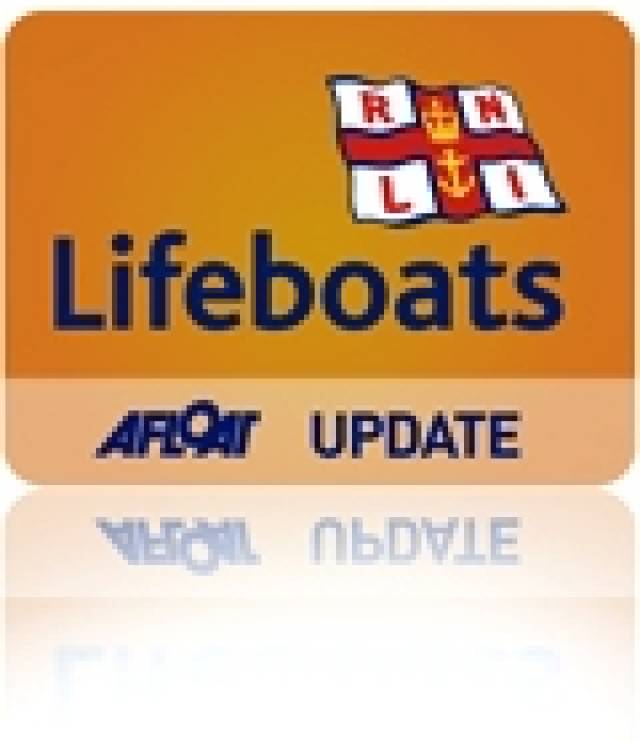#rnli – The lifeboat crew with Larne RNLI have not had much time to relax over the summer, as their lifeboats have been launched seven times since the end of June. The call outs were to a variety of incidents, including a man in trouble in the water, drifting vessels and false alarms with good intent. Thankfully in all seven call outs there was no serious injury or loss of life and the swift action of the lifeboat crew brought several people to safety.
Commenting on the busy season Larne RNLI volunteer lifeboat crewmember Pamela Dorman said, 'It has been a very busy time for the lifeboat crew in Larne and each call out has been different. We never know what will meet us when we launch at all hours of the day and night but we are prepared for everything.
Even with call outs that have proven to be false alarms with good intent, we would prefer to be called out than to have a serious incident missed that could have been prevented. It may even mean a life saved.'
A look back at the last few weeks with Larne RNLI have shown a variety of call outs:
On Friday 25 July Larne inshore lifeboat was launched at 6.11pm to reports of a 27ft Bayliner broken down in Ballygally Bay with two people onboard. The lifeboat crew established a tow, but due to the weight of the boat and the distance to be travelled, they also called on the all-weather lifeboat to assist. Between the two lifeboats the vessel was towed to Glenarm Marina. Larne Coastguard assisted the lifeboat crew by securing boat in the marina.
On Tuesday 22 July Larne's inshore lifeboat was launched on service at 12.40am to a man reported to be in the water. Once on scene the lifeboat crew safely recovered the casualty onboard and asked for an ambulance to meet them at the shore as he had been in the water for 45 minutes. The lifeboat brought the casualty ashore where he was handed into the care of Northern Ireland Ambulance Service and Police Service of Northern Ireland. Larne Coastguard was also in attendance.
On Sunday 20 July Larne All-Weather lifeboat was returning from exercise when they were diverted to a broken down 32ft sailing boat with two people on board in Ballygally bay at 11.12am. There was no wind so the sailing boat was beginning to drift and unable to make its way safely. Larne All-Weather lifeboat took the sailing vessel under tow and brought it to East Antrim Boat Club where it was placed on a mooring.
On Tuesday 15 July the inshore lifeboat was launched to Browns Bay at 5.11pm to what was thought to be two people in the water after a small boat had sank. The inshore lifeboat along with Portmuck coastguard searched the bay and made contact with other boat users who may have seen a small boat sinking in the area. With the area well searched and no one seeing any other boats in the area it was decided that the first informant mistook two lobster buoys for two persons and was a false alarm with good intent.
On Monday 14 July the inshore lifeboat at 1135am to a kayaker struggling to make way off skernoghan point at Islandmagee. When on scene the casualty was found to be very tired from paddling against the tide and a strong wind. He was brought ashore by the lifeboat crew.
On Saturday 12 July Larne RNLI's inshore lifeboat launched at 8.02am to reports of a small grey tender drifting south from Muck Island. The lifeboat crew searched from Portmuck to blackhead lighthouse with Portmuck coastguard searching from the Gobbins cliffs. Bangor RNLI was also tasked to help with the search and they searched north from Bangor to blackhead. Portmuck Coastguard then spotted the tender over two miles north from the shore and directed the lifeboats towards it. When on scene it was established that there was no-one on the tender and it was confirmed it had broken free from a yacht the night before. Larne inshore lifeboat crew took the tender in tow and Bangor lifeboat returned home. Larne RNLI reunited the tender to the owner and returned to station.
On Saturday 28 June Larne's inshore lifeboat launched at 2.20pm to help administer first aid to a man taken ill on browns bay beach. An ambulance was also called. The lifeboat crew was on scene at 2.27pm along with Portmuck Coastguard. However on arrival the casualty could not be located and the RNLI and Coastguard teams searched the beach and surrounding area. When nothing was found all units were stood down and it is believed the man had recovered and made his way home.
































































